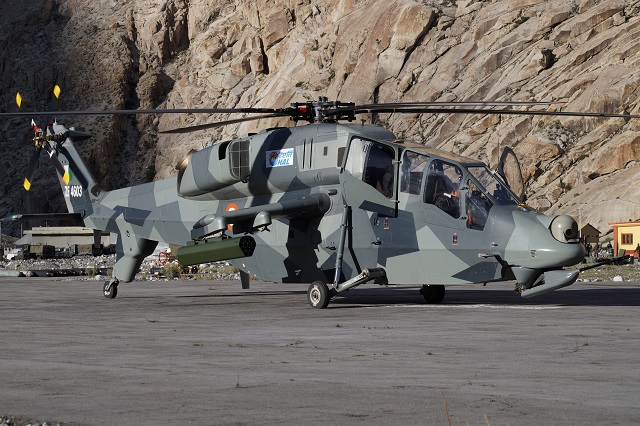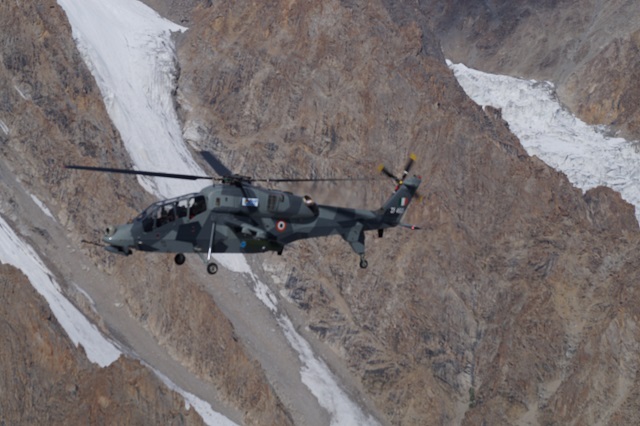Hindustan Aeronautics has carried out hot-and-high flight testing with its Light Combat Helicopter (LCH).
The work took place recently from the northern Indian city of Leh, and saw the helicopter conducting flights at elevations ranging from 3200-4800m, says Hindustan Aeronautics (HAL).
Tests saw the aircraft operating “under extreme weather conditions at different altitudes.”
The aircraft involved was the third LCH prototype, designated TD-3, and temperatures experienced during the tests ranged from 13-27C. During the trials the helicopter was configured with a electro optical pod, rocket launchers, its 20mm cannon turret, and air-to-air missile launchers.

HAL
HAL adds that the LCH was able to take off and land at high altitudes carrying “reasonable amounts of weapons and fuel.”
Given India’s diverse geography, the LCH has been tested in a number of environments, including high-altitude cold weather conditions, sea level tropical conditions, and hot and dry conditions.
HAL expects to produce 179 examples for the Indian military, but the programme has suffered from delays.
With a maximum take-off weight of 5.8t, the LCH is a development of HAL's Dhruv advanced light helicopter. France's Turbomeca helped develop the helicopter's twin Shakti engines.

HAL
Key features include low observable characteristics, a glass cockpit, armour protection, crashworthiness and the ability to operate at night. Mission systems include a helmet-mounted sight, electronic warfare system, directional infrared countermeasure/laser transmitter, a datalink and an infrared suppressor.
According to HAL, the helicopter will be able to carry missiles for a variety of missions, including air-to-air, air-to-surface, and anti-radiation.
Source: FlightGlobal.com
















